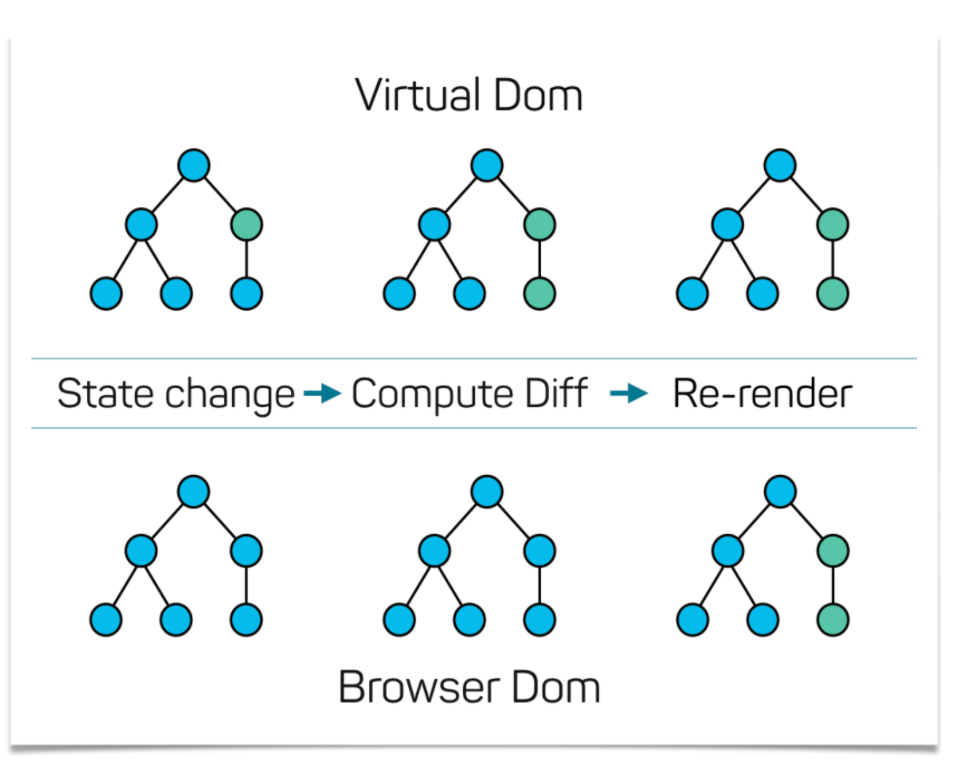Rendering
React is comprised of two main libraries, react and react-dom. The react package contains only the functionality necessary to define React components. It is typically used together with a React renderer like react-dom for the web, or react-native for the native environments.
In summary, while react handles the creation of components, renderers handle the displaying.
react-dom
While react determines:
- how the component tree currently looks like and
- what it should look like (e.g. when data changes)
react-dom receives:
- the differences (the required changes) and
- manipulates the real DOM as a consequence
Updates to the DOM
The re-execution of a component function doesn't mean that the DOM is re-rendered. Components are re-evaluated whenever props, state or context changes. React uses the virtual DOM as a representation of the actual DOM. React computes the necessary changes by using an in-memory version of the DOM, and rerenders the minimal amount necessary.

Example of a re-render
Let's assume the current state of the DOM looks like this:
<div>
<h1>Hello World</h1>
</div>
Now assume that after a new evaluation the DOM should look like this:
<div>
<h1>Hello World</h1>
<p>This is a paragraph</p>
</div>
The only required change is to add a new <p> element. React will compute the difference between the two DOM trees and will only add the new <p> element.
